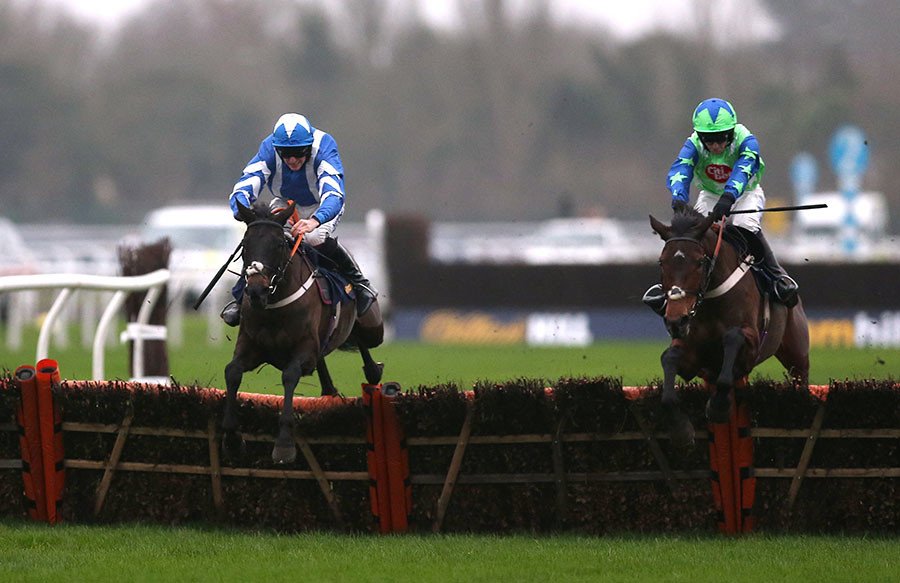Neil Сlark’s sporting edge: Where have all the goals gone?

At half time in the Premier League football program on Saturday there was just one goal in the six 3pm kick-offs. The lack of goals - particularly in the first half of matches - has been a feature of English football this season.
Take Manchester United as an example. On Saturday they were drawing 0-0 at half-time with Swansea, the ninth match in a row at Old Trafford where Louis van Gaal’s team had failed to score in the first 45 minutes. Overall the Premiership’s average of goals per game after this weekend’s fixtures stood at 2.58 - fractionally higher than last season’s 2.57- courtesy of a seven-goal thriller between Everton and Stoke City on 28th December), but lower than any year since 2008-9.
It’s not just in the Premiership where goals are proving hard to come by. In the Championship, the second tier of English football, low scoring games have become the norm too. On 3rd November, there were a meager 18 goals in 12 Championship fixtures and in only two of the matches both teams scored. In 10 Championship matches on 2nd January there were just 17 goals; in only two of the matches did spectators see more than two goals.
If we look at other European leagues it’s a similar story. In Spain, if we take out Barcelona, who have scored 40 goals from 16 matches and Real Madrid who have netted 45 times (a figure greatly boosted by a 10-goal haul against Rayo Vallecano on 20th December), then the goals tally is poor - with no other teams having achieved the 30 goal tally.
Malaga are in 10th place in La Liga, having scored just 13 times in 18 matches. Real Betis are 13th having scored just 13 goals. In the Bundesliga, just three teams (runaway leaders Bayern, second place Dortmund and fourth placed Borussia Monchengladbach) have scored more than 30 goals - and it’s the same number in Italy’s Serie A. In Ligue 1, in France, just two teams, runaway leaders PSG and fifth place Nice, have scored more than 30; Angers are third in the table having scored less than one goal a game.
Goals are drying up all across Europe - and for that we need to blame the ‘possession obsession’. Too many clubs are trying to emulate the football of Pep Guardiola’s Barcelona 2008-12, and the Spanish national team. Guardiola and Spain achieved great success with playing ‘keep-ball‘, but the widespread adoption of possession football by other teams has not been good for the game. Too much importance is now placed on achieving good possession statistics, and not enough on creating goal-scoring opportunities.
To increase the number of goals, teams have to get more players in the opponents’ penalty box and be prepared to risk losing possession to create chances. If we want to see more excitement then coaches need to put away those videos of Spain winning the 2010 World Cup (remember they scored only eight goals in the tournament - the lowest total of any World Cup winners) and rediscover the pioneering work of Wing Commander Charles Reep, the guru of direct football. Reep‘s statistical analysis of football matches found that the vast majority of goals (over 80 percent) came from moves which included three passes or less.
Reep’s ideas were put into practice to great effect by Wolves manager Stan Cullis in England in the 1950s. Cullis’s team won the league title three times in the 1950s, and on two of those occasions scored over 100 league goals in the process. English football became much more defensive after the triumph of Sir Alf Ramsey’s ‘wingless wonders’ in the 1966 World Cup, as evidenced by the fact that the 1968-9 champions Leeds, scored 44 goals fewer than Wolves had done 10 years earlier. In the 1970-1 season, the top flight average of goals per game fell to just 2.36. But there was a Reepian ‘long ball’ revival in England in the early 80s, spearheaded by Graham Taylor’s Watford, who rose from Division Four to Division One in just five remarkable years.
In season 1982/3, Watford finished second in their first ever season in the top flight, scoring 74 goals - with among the highlights an 8-0 win over Sunderland and a 5-3 win over Notts County, another team who deployed a direct style. Watford also lost a cup match 7-3 to Notts Forest that year, but Taylor was not too upset. “There’s no rule to say a game can’t finish 9-9,” he quipped. In the five seasons Taylor managed Watford in the top flight in the ‘80s they averaged 71.8 goals a season.
Other teams, noticing the success of Watford, adopted direct styles in the ‘80s and saw their goal tallies and their league positions rise.
However, from the mid-to-late ‘90s direct football became unfashionable again. Today, most top coaches talk disparagingly of the ‘long ball game’ with some even boasting that their teams don’t play it long even when chasing a game. ‘We play football the right way’ these coaches say, as their fans fall asleep due to the lack of goalmouth action. Revealingly, Louis van Gaal, the Manchester United manager, said he enjoyed the goalless first half of Saturday’s match against Swansea more than the second half when his team got the ball forward much quicker and scored two goals. Yet the same manager’s best result in recent years - the Netherlands stunning 5-1 destruction of Spain in the 2014 World Cup- came when his team played in a very direct way.
While long-ball tactics were often criticized for being ‘crude’, and even ‘primitive’, it’s clear when we look at the paltry goal tallies in England and other European leagues that the pendulum has swung way too far the other way. Possession football is killing the game. Although goalless draws can sometimes be absorbing to watch, it’s goals that give football its kick. I’m sure I’m not the only football fan nostalgic for the days when teams created far more chances, but made far fewer passes.

Despite the postponement of the Welsh National due to a waterlogged course, there was still a busy enough Christmas horse-racing program in Britain and Ireland. So what did we learn from all the action?
1. Cue Card is a genuine Cheltenham Gold Cup contender. Colin Tizzard’s stable star made it ‘fourth time lucky’ as he landed the King George at Kempton at the fourth time of asking. The 10-year-old is in the form of his life at present and although his stamina for the extended 3m2f Gold Cup is not guaranteed, the way he stayed on at the finish over 3m at Kempton - and his great Cheltenham Festival record (he has form figures of 1,421 there), provides grounds for optimism.
2. Champion trainer Paul Nicholls is still not firing on all cylinders. Nicholls saddled 23 runners in the period from December 26 to December 30, and not one of them won. In the King George, Nicholls’ runner Silviniaco Conti, the winner of the race for the past two years, pulled up. However, Nicholls did saddle two winners on New Year’s Day - a possible sign that a revival is on its way.
3. Back Yorkhill in whatever race he runs in at the Cheltenham Festival. Willie Mullins’ six-year-old was an impressive winner of the Grade One Tolworth Hurdle at Sandown on Saturday - on heavy ground, which would not have suited. Mullins said afterwards that his horse would prefer better ground, which he’s likely to get at Cheltenham in March. The Supreme Novices’ Hurdle, the opening race of the Festival, is the likeliest target, though he could alternatively run in the Neptune, run over a longer trip.
Other highlights of the festive program for me included Scottish raider Seeyouatmidnight’s bold front-running performance in the Dipper Chase at Cheltenham and the brave effort from Aachen, pipped at the post by Soll in an epic Veterans’ Chase at Sandown. It was also good to see Rigadin De Beauchene, tipped up in this column for the postponed Welsh National, win his alternative engagement at Haydock. This Saturday’s main action comes from Chepstow, where the rescheduled Welsh National takes place (at 2.35pm UK time). The 2013 winner Mountainous and the aforementioned Rigadin De Beauchene (if he lines up) are two that should give each-way backers a good run for their money.
Follow Neil Clark’s sporting twitter feed @MightyMagyar
The statements, views and opinions expressed in this column are solely those of the author and do not necessarily represent those of RT.














